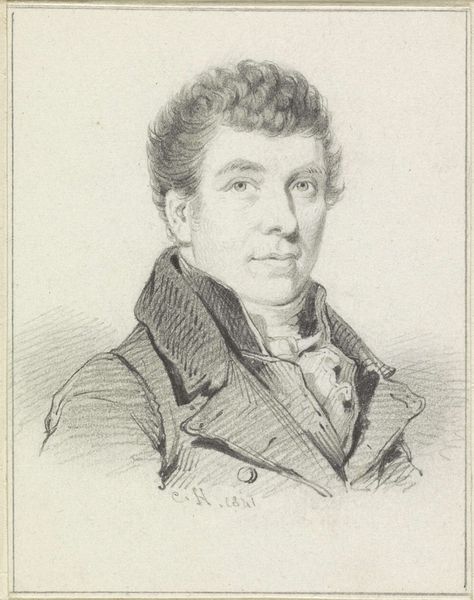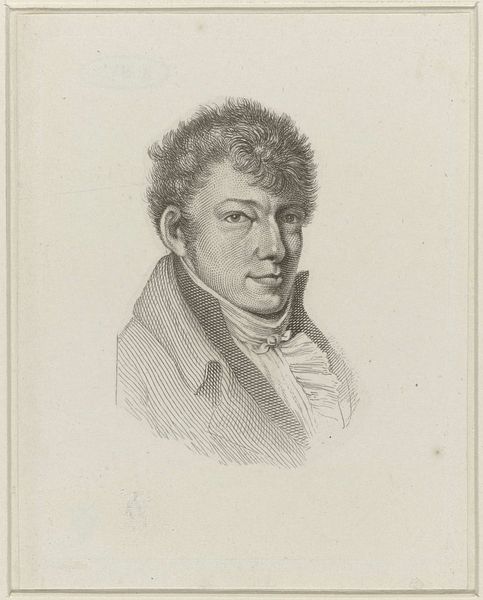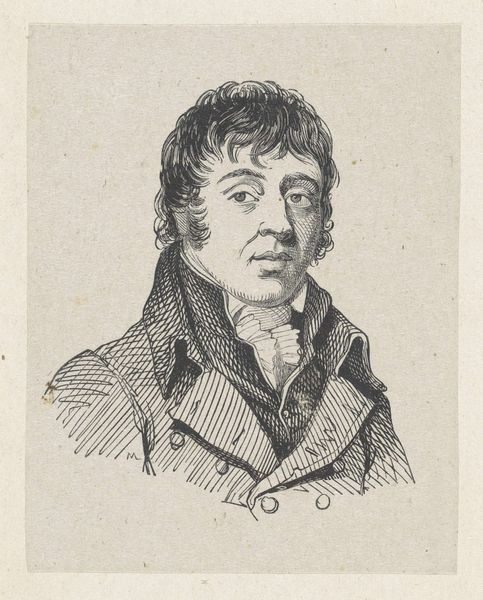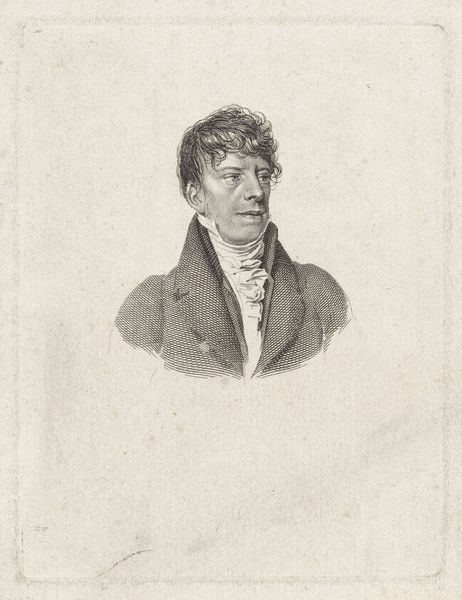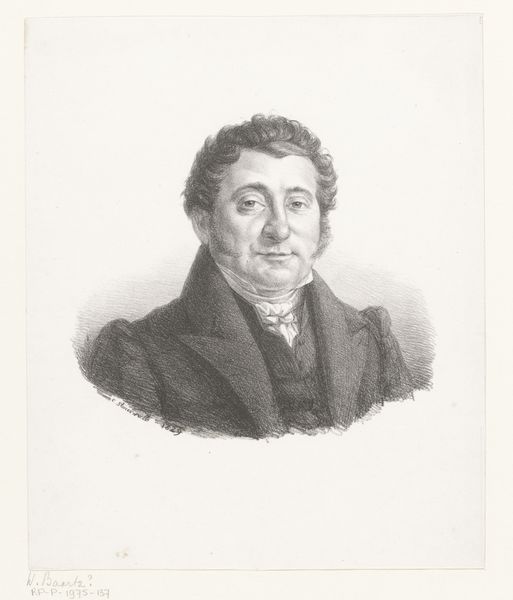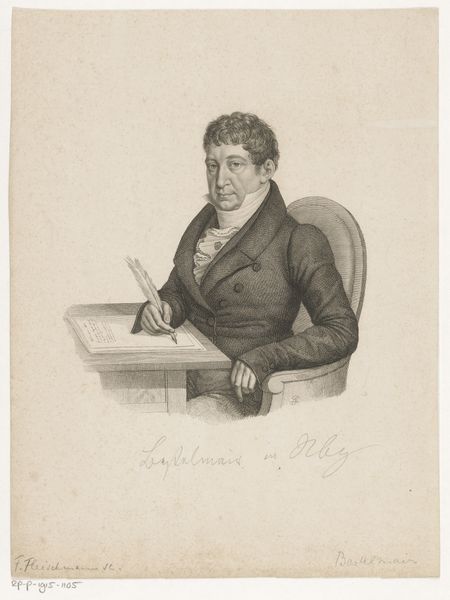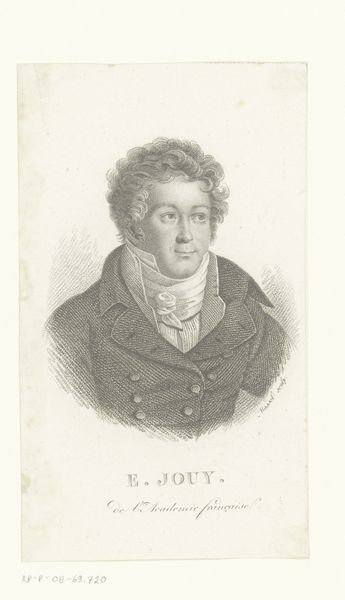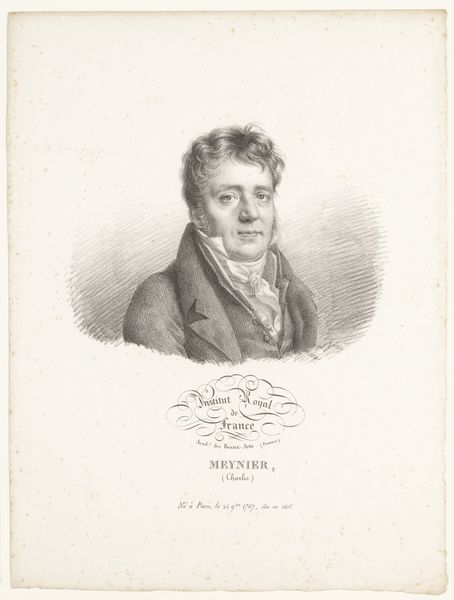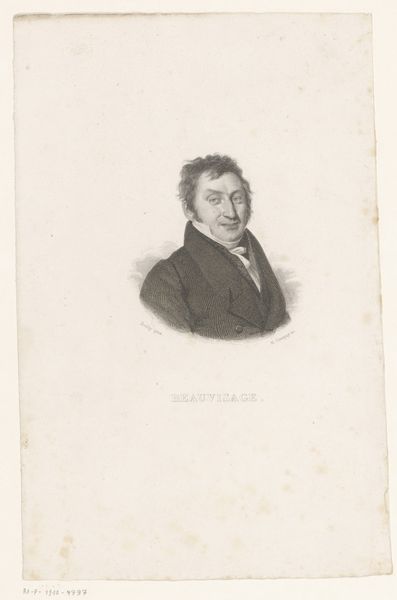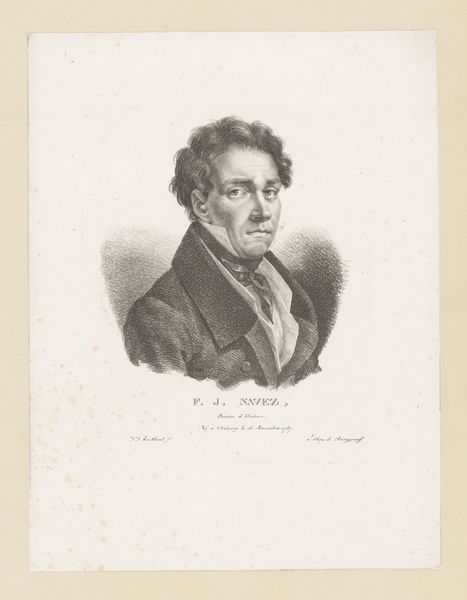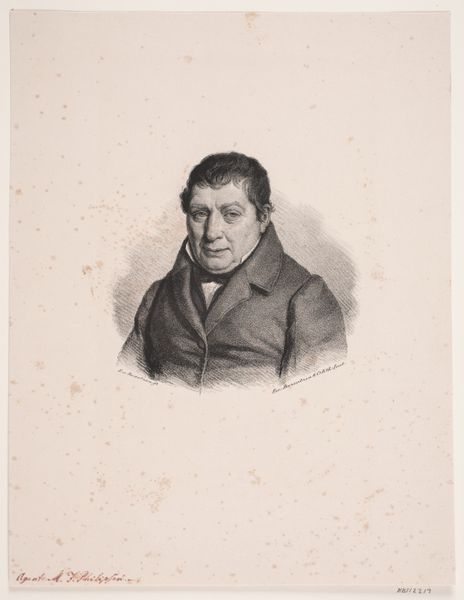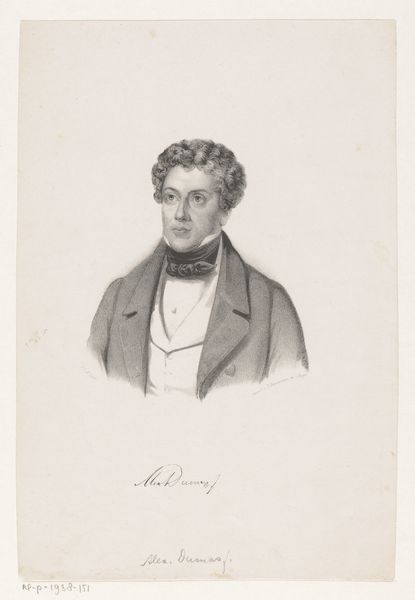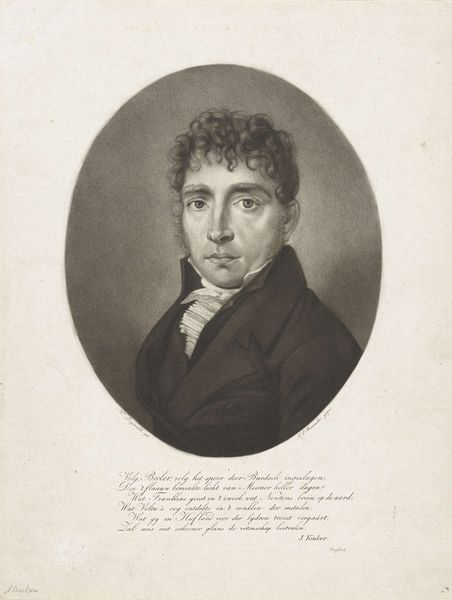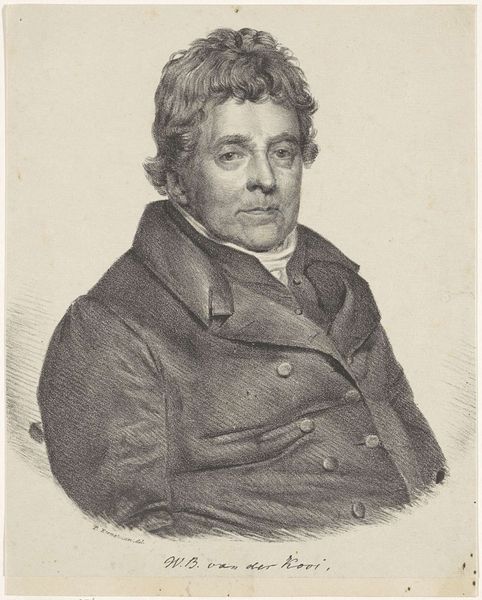
#
picture layout
#
light pencil work
#
wedding photograph
#
photo restoration
#
light coloured
#
archive photography
#
historical photography
#
old-timey
#
photo layout
#
celebration photography
Dimensions: height 246 mm, width 170 mm
Copyright: Rijks Museum: Open Domain
Editor: Here we have Philippus Velijn's "Portret van Matheus van Heyningen Bosch," made sometime between 1821 and 1836. It's a lovely, intimate portrait. There's something very domestic and thoughtful about it, with the sitter at his desk, pen in hand. What do you see in this piece? Curator: This portrait offers us a window into the societal constructs of 19th-century masculinity and the performance of intellectualism. It is fascinating to observe the sitter positioned in what appears to be a study. What does it tell us about the sitter's role within his domestic sphere, and his position in society? Think about how the artist chose to depict his profession or social status through dress and accoutrements. Editor: I hadn’t thought about it that way, more as a man at work. So the portrait then, it’s not just about the man, Matheus, but also about communicating social status and, really, power. Curator: Precisely! Consider how this image interacts with broader narratives of male authority during that time. Are there power dynamics at play beyond what initially meets the eye? Also, note that the historical context in which it was created has specific expectations around how men presented themselves in art, in contrast to how women were represented. Editor: That’s such an interesting distinction! So, it is also speaking to the historical objectification and construction of both gender identities, through portraiture conventions. Curator: Exactly. Furthermore, the domesticity we observe – the desk, the writing tools - might represent not just intellect, but a claim to a space separate from the outside world, something not available to everyone in that era. Consider its accessibility through the lines of race and class. How does that understanding shape our experience of the work today? Editor: I'm beginning to see how a seemingly simple portrait can become a point of entry to larger, more complex social and political narratives! Curator: Indeed. The power of art lies in its capacity to reflect, question, and even challenge the status quo, allowing us to critically examine the past.
Comments
No comments
Be the first to comment and join the conversation on the ultimate creative platform.
